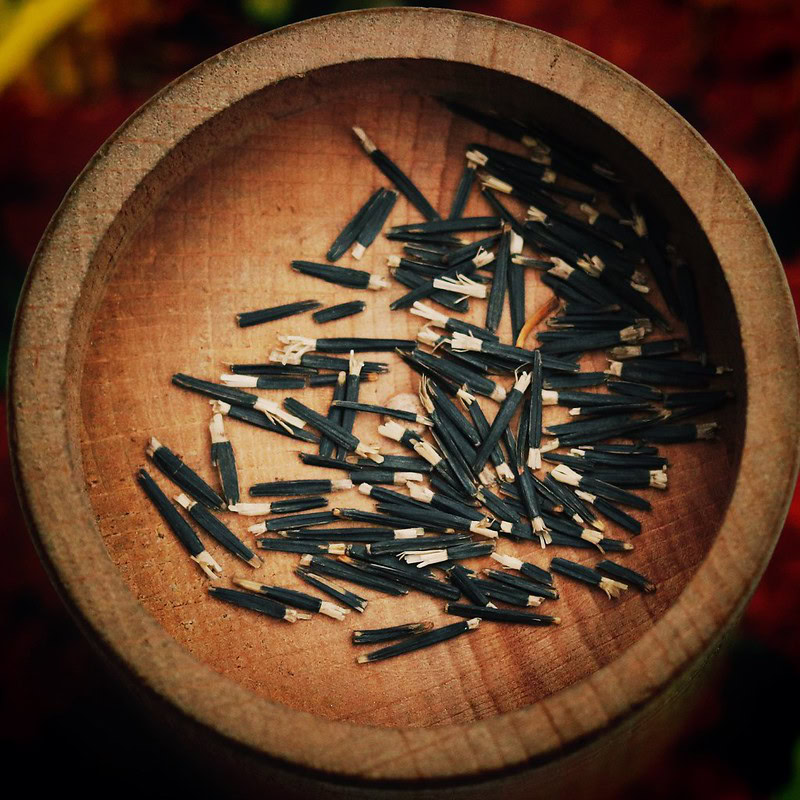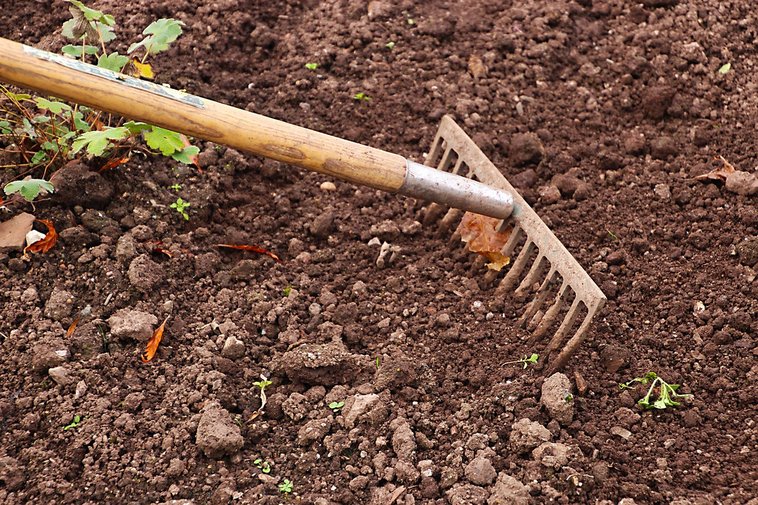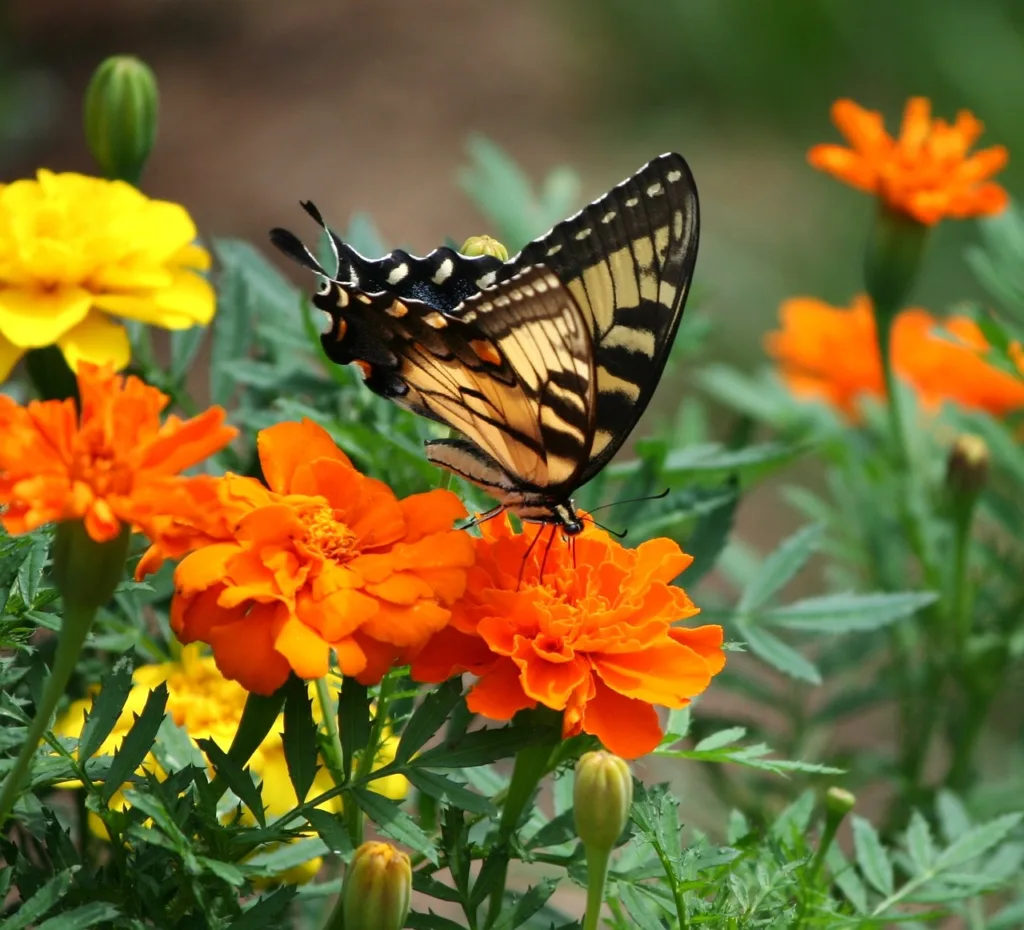Marigolds are vibrant and cheerful flowers that can brighten any garden with their stunning hues of yellow, orange, and red. Planting marigold seeds is a simple process that gardeners of all skill levels can accomplish.
Whether you’re a novice starting your gardening journey or a seasoned pro seeking to add color to your garden, marigolds are the perfect choice.
This guide explores the steps to successfully plant marigold seeds and care for these beautiful flowers.
| Aspect | Details |
|---|---|
| Seed Type | Flower seeds |
| Botanical Name | Tagetes spp. |
| Seed Characteristics | Small, oblong or cylindrical shape |
| Seed Color | Typically brown or black |
| Seed Coating | Hard outer coating |
| Germination Time | 4 to 14 days |
| Germination Temperature | 70 to 75°F (21 to 24°C) for optimal results |
| Planting Depth | Plant seeds at surface or slightly covered |
| Sowing Method | Directly in the ground or started indoors |
| Soil Type | Well-draining soil |
| Watering Needs | Keep soil consistently moist during germination |
| Light Requirements | Full sun |
| Typical Height | Varies by variety, commonly 6 to 36 inches |
| Flower Colors | Various, including yellow, orange, and red |
| Uses | Garden borders, containers, companion planting |
| Special Considerations | Attracts pollinators, deer-resistant, pest-repelling |

Selecting the Right Seeds
Before you begin planting marigold seeds, it’s essential to choose the right variety for your garden. There are different types of marigolds, including French marigolds, African marigolds, and signet marigolds.
Each type varies in size, color, and growth habits, so consider the specific needs of your garden before selecting a variety.
Additionally, you can choose between heirloom seeds and hybrid seeds, with heirloom seeds being open-pollinated and true to type, while hybrid seeds offer unique characteristics like disease resistance.
Preparing the Soil
Marigolds blooms in well-drained soil with plenty of sunlight. Start by selecting a sunny location in your garden with fertile, loamy soil.
Remove any weeds or debris from the area and loosen the soil using a garden fork or tiller. Adding organic matter such as compost or aged manure can improve soil fertility and drainage, providing a healthy foundation for your marigold seeds to grow.

Planting the Seeds
Planting marigold seeds is a straightforward process that can be done in early spring after the last frost date in your area. Follow these steps to plant your marigold seeds:
- Begin by preparing seed trays or pots filled with moistened seed starting mix.
- Place the seeds on the surface of the soil, spacing them about 2 inches apart.
- Gently press the seeds into the soil, being careful not to bury them too deeply.
- Cover the trays or pots with a clear plastic dome or plastic wrap to create a greenhouse effect.
- Keep the soil consistently moist but not waterlogged until the seeds germinate, usually within 7-14 days.
Caring for Marigold Seedlings
Once your marigold seeds have germinated, it’s essential to provide proper care to ensure healthy growth. Here are some tips for caring for marigold seedlings:
Watering: Water your seedlings regularly, keeping the soil evenly moist but not soggy.
Light: Marigolds require full sunlight to thrive, so place them in a location with at least 6-8 hours of direct sunlight per day.
Thinning: If your seedlings are overcrowded, thin them out by snipping off the weaker seedlings to allow the remaining plants to grow strong.
Fertilizing: Once your seedlings have true leaves, you can fertilize them with a balanced fertilizer to promote healthy growth.

Transplanting Marigold Seedlings
Once your marigold seedlings have grown to a height of 2-3 inches and have several sets of true leaves, they are ready to be transplanted into your garden. Here’s how to transplant your marigold seedlings:
- Choose a location in your garden with well-drained soil and full sunlight.
- Dig holes that are slightly larger than the root ball of the seedling.
- Gently remove the seedling from the seed tray or pot, carefully so as not to damage the roots.
- Place the seedling in the hole and backfill with soil, tamping down gently to secure the plant.
- Water the transplanted seedlings thoroughly to help them establish in their new location.
Maintaining Marigold Plants
Marigolds are relatively low-maintenance plants that require minimal care to thrive. Here are some tips for maintaining healthy marigold plants:
Watering: Water your marigold plants regularly, allowing the soil to dry out slightly between waterings.
Deadheading: Removing faded flowers can encourage continuous blooming throughout the growing season.
Mulching: Applying a layer of organic mulch around your marigold plants can help retain moisture and suppress weeds.
Pest Control: Keep an eye out for common pests like aphids and caterpillars, and treat infestations promptly to protect your plants.
Some special things to grow marigold plants quickly
Before planting a marigold plant in your home or garden, make sure to obtain a high-quality plant with good flowers.
When planting the plant in the ground or a pot, add two handfuls of cow dung to the soil and water it generously.
Avoid using any liquid or spray on the plant for at least twenty days after planting, as it may cause damage.
After twenty days, you can add NPK manure mixed with mustard skin at a distance of about seven inches from the stem of the plant.
Water the plant again after adding the manure. For potted plants, add more compost to the pot and put it on the sides.
You can cut dried flowers with scissors to prevent bacteria from entering the plant. Once a month, you can spray organic liquid to protect your plants from pests, which can be purchased from a nursery.

Why Marigolds Are Beneficial in Vegetable Gardens
Marigolds, whether African or French, are fantastic flowers for your vegetable garden. They have bright yellow or orange colors that attract pollinators such as bees, butterflies, and hummingbirds. Additionally, these flowers are known to attract beneficial insects like lacewings, ladybeetles, and parasitic wasps.
Planting marigolds in your garden can help suppress root-knot nematodes and some fungi, bacteria, insects, and viruses. Nematodes are microscopic roundworms that can damage your plant’s roots, but marigolds produce Alpha-Terthienyl, a chemical that is toxic to root-knot nematodes and other plant disease organisms.
Furthermore, the strong odor of marigold foliage can help deter deer and rabbits, making them a useful tool for protecting your crops. Consider planting marigolds around vulnerable crops to take advantage of this benefit.
Conclusion
Planting marigold seeds is a rewarding experience that can add a pop of color to your garden and attract beneficial pollinators.
By selecting the right seeds, preparing the soil properly, and providing adequate care, you can enjoy a garden filled with vibrant marigold blooms.
Whether you’re a beginner or an experienced gardener, growing marigolds is a fun and easy way to enhance your outdoor space.
So grab your seeds, roll up your sleeves, and get ready to enjoy the beauty of these stunning flowers in your garden!
FAQs
Which side of the marigold seed goes down?
- Marigold seeds are typically small and do not have a distinct top or bottom. Plant them horizontally in the soil, and they will find their way to germinate properly.
Can I soak marigold seeds before planting?
- Soaking marigold seeds before planting is generally not necessary. Marigold seeds have a hard outer coating, and soaking them may not significantly improve germination. However, some gardeners choose to soak seeds for a few hours to potentially speed up the germination process.
How long does it take marigold seeds to germinate?
- Marigold seeds usually germinate within 4 to 14 days after planting, depending on factors such as temperature, soil conditions, and seed quality.
Can you put marigold seeds straight into the ground?
- Yes, you can plant marigold seeds directly into the ground. Marigolds are hardy plants, and sowing seeds directly in the garden bed where you want them to grow is a common and effective method. Ensure that the soil is well-prepared and frost danger has passed before direct sowing.

